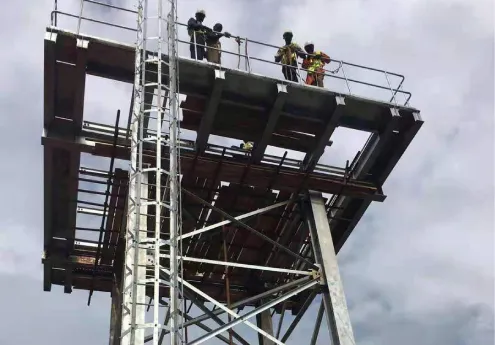loading...
- No. 9, Xingyuan South Street, Dongwaihuan Road, Zaoqiang County, Hengshui, Hebei, China
- admin@zjcomposites.com
- +86 15097380338
- Welcome to visit our website!
frp structural members
The Role of FRP Structural Members in Modern Construction
Fiber Reinforced Polymer (FRP) structural members have emerged as a revolutionary component in modern construction, offering a myriad of benefits that address various limitations found in traditional building materials. The integration of FRP into structural engineering signifies a shift in how we approach the design and construction of buildings, bridges, and other infrastructural elements. This article explores the significance, advantages, applications, and challenges of FRP structural members in today's construction landscape.
Understanding FRP
Fiber Reinforced Polymer is a composite material consisting of a polymer matrix reinforced with fibers. The fibers can be made from various materials, including glass, carbon, or aramid, while the polymer matrix is typically composed of thermosetting or thermoplastic resins. This unique combination results in materials that are lightweight, strong, and resistant to environmental degradation, making them ideal for a wide range of structural applications.
Advantages of FRP Structural Members
1. Lightweight Nature One of the most significant advantages of FRP materials is their low density. Compared to traditional materials like steel and concrete, FRP is considerably lighter, facilitating easier handling and installation. This feature not only reduces transportation costs but also allows for more efficient designs with less demand on foundational supports.
2. Corrosion Resistance FRP materials exhibit remarkable resistance to corrosion caused by environmental factors such as moisture, salt, and chemicals. This attribute is particularly valuable in applications exposed to harsh conditions, such as marine structures and chemical plants, where the longevity of materials is critical.
3. High Strength-to-Weight Ratio FRP structural members possess an exceptional strength-to-weight ratio, ensuring that they can withstand significant loads while remaining lightweight. This characteristic allows engineers to design sleeker structures without compromising safety or performance.
4. Flexibility in Design The versatility of FRP materials allows for innovative engineering designs that may be difficult to achieve with traditional materials. FRP can be molded into complex shapes and forms, enabling architects and designers to explore creative possibilities and push the boundaries of contemporary architecture.
5. Thermal Insulation FRP materials exhibit inherent thermal insulating properties, making them advantageous for energy-efficient building designs. This characteristic can contribute to lower energy costs and improved occupant comfort by minimizing heat transfer.
Applications of FRP Structural Members
frp structural members

FRP structural members are being increasingly utilized in various sectors of the construction industry due to their outstanding properties. Some of the key applications include
- Bridges FRP is used for bridge components, such as beams and decks, where strength, reduced weight, and corrosion resistance are critical. Several bridges around the world have successfully incorporated FRP into their designs, showcasing enhanced durability and performance.
- Building Structures FRP materials are utilized in both residential and commercial building applications, particularly in façades, floors, and reinforcement of existing structures. This use helps to extend the lifespan of buildings while also providing aesthetic appeal.
- Infrastructure Rehabilitation FRP is increasingly used for retrofitting and strengthening aging infrastructure, such as highways and tunnels. By applying FRP sheets and laminates, engineers can enhance load capacity and extend the life of existing structures.
- Industrial Applications In industrial settings, FRP members are employed in constructing chemical storage tanks, platforms, and piping systems due to their resistance to harsh chemicals and environmental conditions.
Challenges and Future Directions
Despite the numerous benefits, the adoption of FRP structural members is not without challenges. High initial costs and a lack of established design codes can hinder wider acceptance within the construction community. Furthermore, the long-term durability and behavior of FRP materials under extreme conditions still require comprehensive research to build confidence among engineers and builders.
Looking forward, ongoing advancements in FRP technology, such as improved manufacturing processes and cost reduction strategies, are expected to enhance their affordability and applicability. The establishment of robust design codes and standards will also facilitate broader acceptance and integration of FRP in mainstream construction.
Conclusion
FRP structural members represent a progressive step forward in construction materials, combining lightweight characteristics with high strength and durability. As the construction industry continues to seek innovative solutions to meet modern demands, FRP’s potential to revolutionize structural design and application is being increasingly recognized. By overcoming existing challenges and embracing new technologies, the future of construction will likely see a more significant role for FRP materials, fostering sustainable and resilient infrastructure development.
-
The Rise of FRP Profiles: Strong, Lightweight, and Built to LastNewsJul.14,2025
-
SMC Panel Tanks: A Modern Water Storage Solution for All EnvironmentsNewsJul.14,2025
-
GRP Grating: A Modern Solution for Safe and Durable Access SystemsNewsJul.14,2025
-
Galvanized Steel Water Tanks: Durable, Reliable, and Ready for UseNewsJul.14,2025
-
FRP Mini Mesh Grating: The Safer, Smarter Flooring SolutionNewsJul.14,2025
-
Exploring FRP Vessels: Durable Solutions for Modern Fluid HandlingNewsJul.14,2025
-
GRP Structures: The Future of Lightweight, High-Performance EngineeringNewsJun.20,2025
